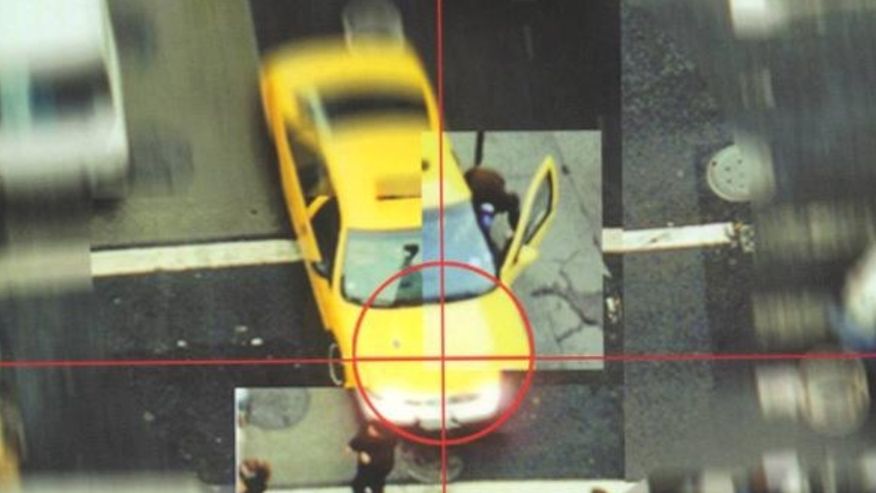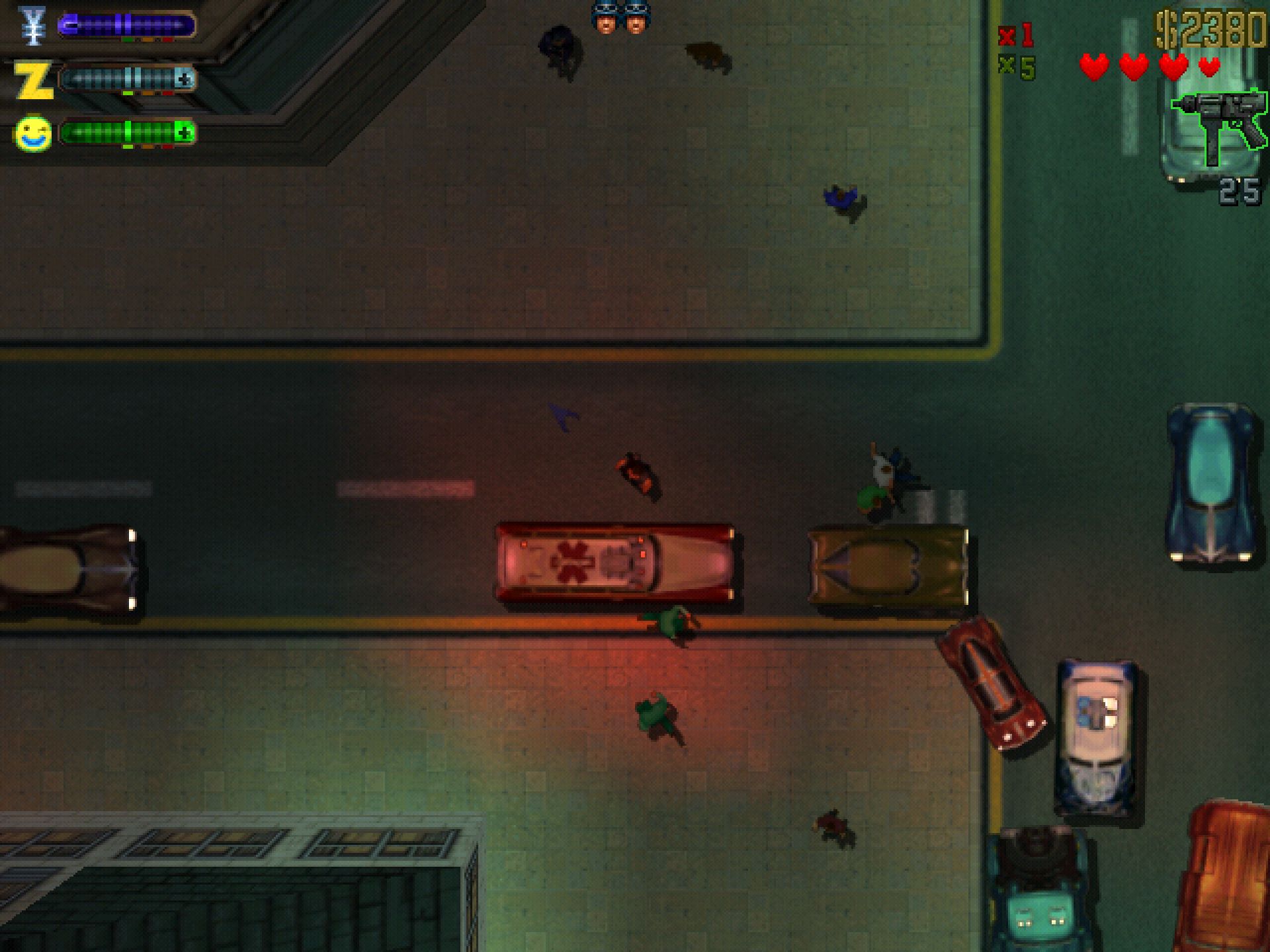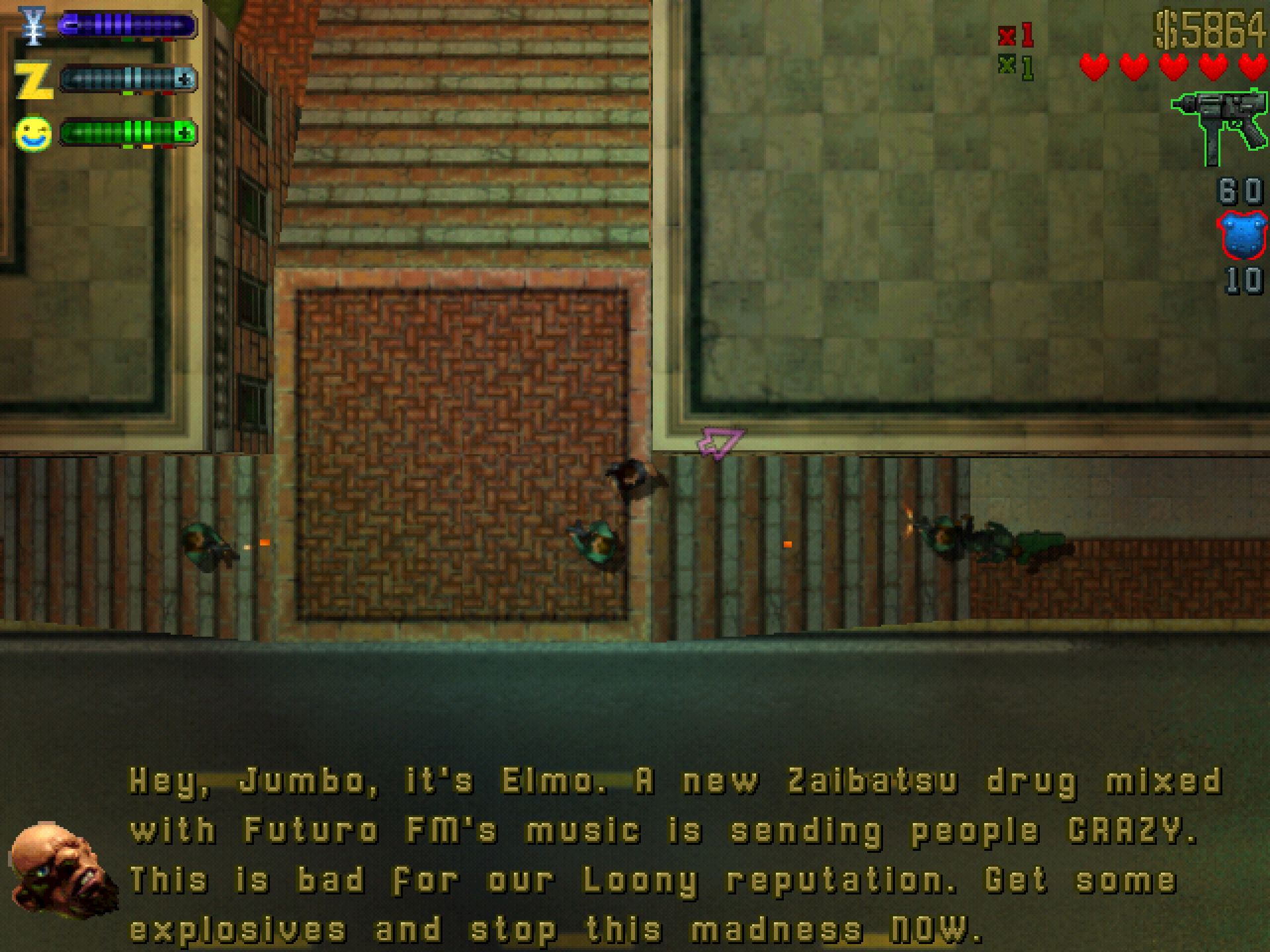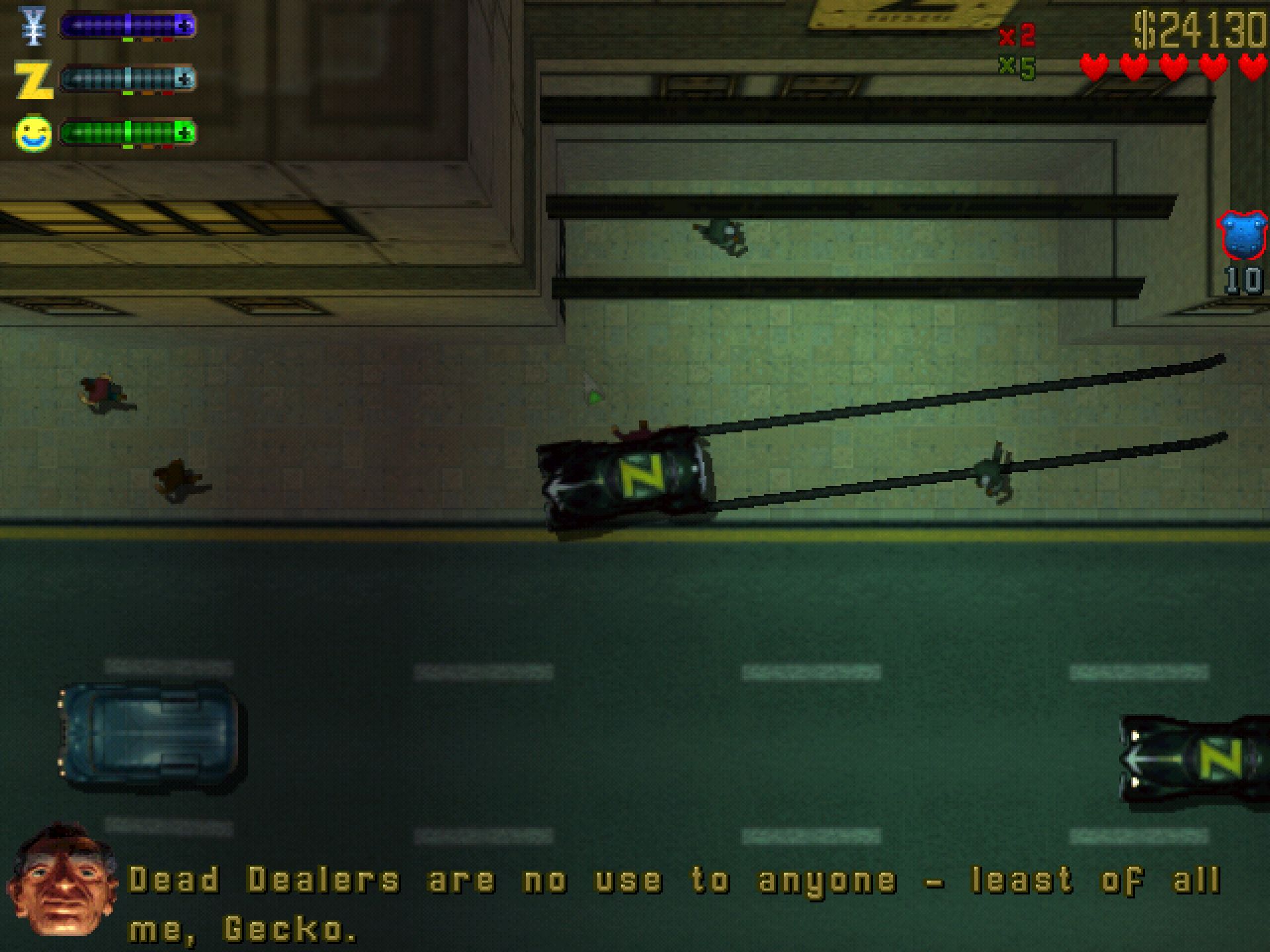Revisiting Grand Theft Auto 2, the weirdest GTA of them all
A muddled game with sparks of the brilliance that would emerge in GTA 3.

Reinstall invites you to join us in revisiting PC gaming days gone by. Today, Andy replays GTA's most bizarre installment.
After the runaway success of the first Grand Theft Auto in 1997, DMA Design—now known as Rockstar North—had to keep the momentum going with a sequel. Grand Theft Auto 2 was released in 1999 and refined the freeform structure that made the original such a hit, but with a wildly different visual style and a new respect system. Reviews were mixed and sales were lower than expected, but it was an important step towards the series’ influential leap to three dimensions with Grand Theft Auto 3 in 2001.
While the first game features contemporary caricatures of New York, San Francisco, and Miami, Grand Theft Auto 2 takes place in the entirely fictional Anywhere City, a retro-futuristic metropolis with a bleak, dystopian atmosphere. Promo material for the game describes it as “a fully dysfunctional urban hell” and explains that the artists modelled the city on apocalyptic visions of the future from the ’70s and ’80s movies This is an early example of cult cinema, particularly from America, influencing Rockstar’s games.
The vehicles are especially stylish, taking vintage ’50s designs—all curves, chrome, and giant grills—and giving them a futuristic twist. “As if Havana got transported to the 21st Century,” says the game’s charmingly retro Flash-based website, which is still available online, almost 20 years later. It’s the most heavily stylised and visually imaginative game in the series, representing a curious digression before the studio eventually settled on Grand Theft Auto being a satirical parody of the worst of modern pop culture.
But there are traces of the wry satire that would come to define the series, mostly on the tongue-in-cheek radio stations that play when you enter a vehicle. There are 11 in total, some of which can only be heard in certain parts of the city, playing a variety of music recorded especially for the game. And between the songs there are puerile commercials advertising fictional products, which would eventually become a series staple, including ‘Orgasmo’ chocolate bars (“Cold, hard, and surge after surge of creamy caramel”) and ‘Lad Rover’ SUVs (“A fanny magnet women just can’t avoid”).

At six heads the national guard will be mobilised, throwing tanks and armoured cars at you. By this point it’s a miracle if you survive for more than a few minutes.
Not exactly Rockstar’s sharpest satire, but it’s interesting to see (well, hear) an important part of the series slowly taking shape. In fact, the whole game almost feels like a prototype for the series’ transition to 3D. It expands on the wanted system, bringing in SWAT teams, roadblocks, and the military when you cause enough mayhem. The AI is smarter, which means fights can break out between the police and gangs, and sometimes you’ll even be pulled out of a car you’ve attempted to steal by its furious owner. We take this stuff for granted in GTA today, but in 1999 it was all brand new. You can see the first seeds being planted for the anarchic, emergent AI interactions that would make Los Santos feel so vibrant and alive in GTA 5.
There are six wanted levels, represented by the floating heads of police officers at the top of the screen. A minor crime (at least in GTA terms), such as murdering a few pedestrians, gets you one star and a police chase. Keep killing folk and you’ll escalate to two, then three, which sends more cops after you and more aggressively. But it’s when you hit four heads that things get dicey. SWAT vans carrying four heavily armoured officers will come at you. At five heads ‘special agents’ (the FBI, basically) with silenced machine guns are sent in. Then, finally, at six heads the national guard will be mobilised, throwing tanks and armoured cars at you. By this point it’s a miracle if you survive for more than a few minutes, but there’s a thrill in seeing how long you can last when the city is throwing everything it has at you. And, of course, you can drive a tank yourself and unleash your very own symphony of explosions.
Even two years after the first game was released, being able to freely roam the map and tackle missions in almost any order you wanted was still a novelty. As was the addition of bonus missions and optional objectives, like the infamous Kill Frenzies (later ‘rebranded’ as Rampages) that challenge you to kill X amount of people in X amount of time with X weapon. The map was also littered with spinning tokens, a precursor to the hidden packages, pigeons, and radioactive waste in later sequels. Yes, even at this early stage open world games were filling their maps with arbitrary collectibles.
The biggest gaming news, reviews and hardware deals
Keep up to date with the most important stories and the best deals, as picked by the PC Gamer team.
Reading reviews from the time, every single one of them (including our own) criticises the visuals. The real-time lighting effects and sharper sprites are an improvement on the original, but it’s still fairly ugly, even by 1999 standards. Something the developer actually addresses on the game’s website. “We spend time on gameplay rather than throwing millions of polygons around,” it says, predicting the critics. “We’ve got complex, interactive AI and fun, elaborate missions.” It adds that while a “typical game these days” will use 70% of its processor time on visuals, GTA 2 has an “emphasis on content, with 50% used for game code”. A rare time when Rockstar wasn’t at the forefront of technology.

But of all the systems GTA 2 experiments with, the respect meter is the most interesting and ambitious. Seven colourful gangs rule the city and its various districts, and your standing with them constantly changes as you play the game.
The Zaibatsu Corporation and the Loonies, for example, are arch rivals, which means completing jobs for one will offend the other and alter your respect. And some gangs won’t even offer you any work until you’ve spilled the blood of a competitor. A meter at the top-left of the screen lets you keep tabs on what each group thinks of you, and some of the most lucrative missions are only available if you have maximum respect.
Anywhere City is split into three districts: Commercial, Industrial, and Residential. There’s a relatively safe neutral zone in each district, but most of the city has been carved up between the gangs. So if you’re currently an enemy of the Yakuza because you’ve been helping out the Zaibatsu Corporation, straying into their territory will cause them to attack you. And if they really hate you, they’ll be packing more powerful weapons. This can make traversing the city a chore, but it does at least give the respect system some weight. Your allegiances affect the game in a direct, meaningful way.
Further evidence of Rockstar’s love of cinema is the fact that GTA 2 opens with an actual film. Well, excerpts from one at least. The live-action intro sequence is in fact made up of clips from a short movie Rockstar produced to promote the game. It was directed by Alex De Rakoff, a music video director with a few feature films under his belt, and shot on the streets of New York City. It follows silly-named criminal Claude Speed (played by Scott Maslen, who UK soap opera fans may recognise as EastEnders’ Jack Branning) as he engages in various illicit activities, and it’s actually pretty entertaining, with a great soundtrack by influential drum-and-bass label Moving Shadow.

As well as being a fast-moving collection of GTA moments, like our hero popping into the pay-and-spray to throw off the cops, it’s also an example of how the respect system works. We see Speed working for various gangs, playing them against each other, culminating in a bloody shootout as he strolls away unscathed. But then a assassin catches up with him and puts a bullet in his head. He can always respawn.
Today, Rockstar games has such a clear, confident vision. Everything is pitch perfect, from the art to the music. But GTA 2 is a tangled mess of themes and visual ideas, and by far the weirdest, most offbeat game in the entire Grand Theft Auto series. But that’s what makes it so interesting to return to. And it’s incredible that, just two years later, Rockstar made the transition to 3D and released the hugely influential Grand Theft Auto 3. They feel like they were made ten years apart, never mind two. GTA 2 is also tame by today’s standards, and it seems unbelievable that so many tabloid newspapers thought it was corrupting the minds of children back in 1999. The violence is totally absurd and cartoonish.
As much as I admire GTA 2 as a historical artifact, and a fascinating snapshot of Rockstar at a particular period of its existence, it isn’t much fun to play. It runs fine on modern PCs thanks to a tweaked version it released for free a few years ago, although it doesn’t play well with high resolutions unless you use a mod. But when you’ve tasted the delights of GTA 5, it’s hard to go back to the top-down era. The driving is annoyingly twitchy, the camera can barely keep up with you, and the missions are far too punishing. Back then there was nothing else quite like it, but now I can enjoy being a criminal in a free-roaming city in 3D with mission checkpoints, 4K graphics, and funnier jokes.
If it’s set in space, Andy will probably write about it. He loves sci-fi, adventure games, taking screenshots, Twin Peaks, weird sims, Alien: Isolation, and anything with a good story.


